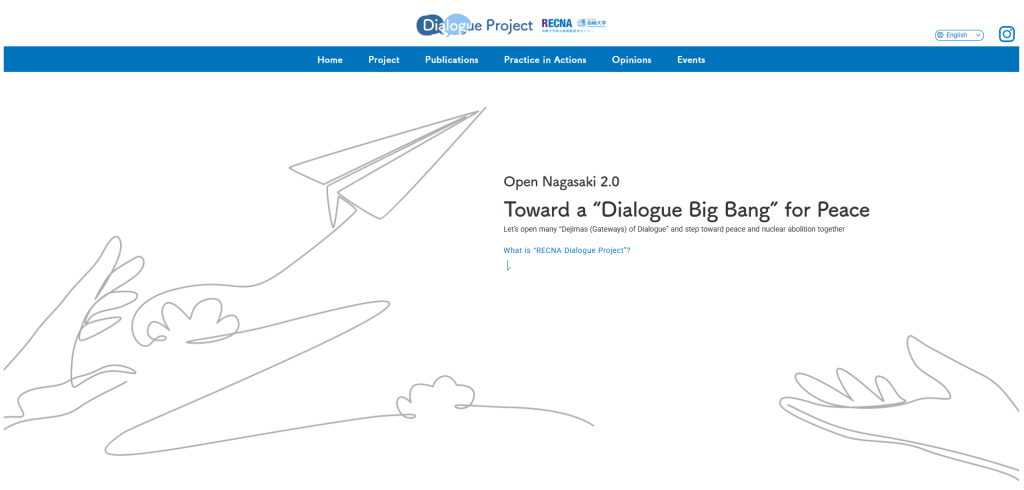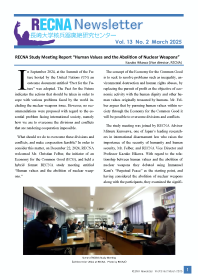RECNA Newsletter Vol.14 No.1 (September 30, 2025)
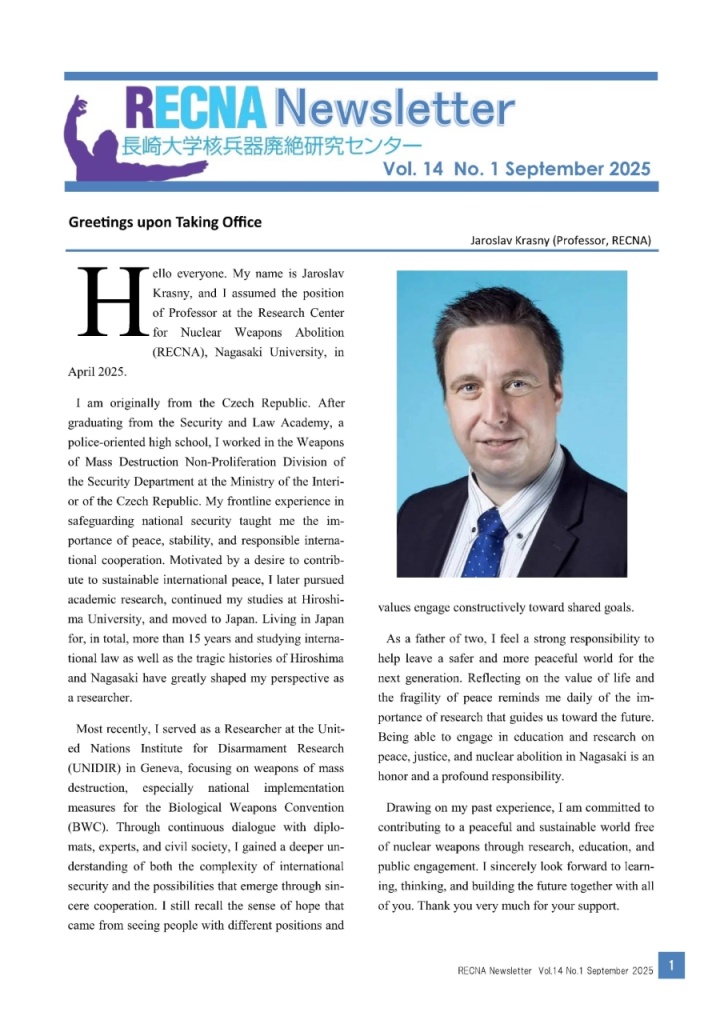
|
Greetings upon Taking Office — Jaroslav Krasny Participation in the TPNW Meeting of States Parties and the NPT Preparatory Committee Dialogue Project Collaboration with the United Nations Institute for Disarmament Research (UNIDIR) Update on the 2025 Edition of World’s Nuclear Warhead Data Commemorating the 80th anniversary of the end of the war and the atomic bombings: International Human Resource Development Project The Thirteenth Nagasaki Youth Delegation Activity Report [Full text] * Citation URI: http://hdl.handle.net/10069/0002000821 |
Vol.8, Issue 1 of Journal for Peace and Nuclear Disarmament (J-PAND) is now available online.
For the issue, see here.
The issue features “The Future of Nuclear Stability in East Asia” with an introductory article by Jon B. Wolfsthal & Toby Dalton.
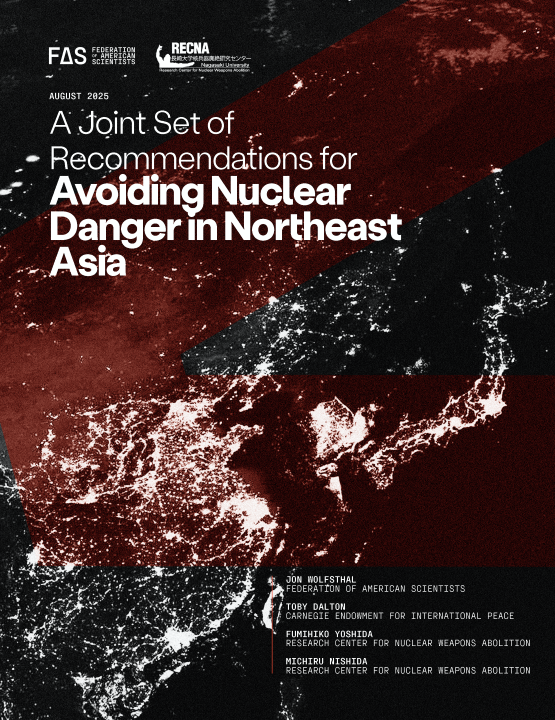 A Joint Set of Recommendations for Avoiding Nuclear Danger in Northeast Asia
A Joint Set of Recommendations for Avoiding Nuclear Danger in Northeast Asia
Jon Wolfsthal, Toby Dalton, Fumihiko Yoshida, Michiru Nishida
RECNA has conducted joint research with the Federation of American Scientists (FAS), and as a result of this collaboration, has released a “A Joint Set of Recommendations for Avoiding Nuclear Danger in Northeast Asia”
■ A Joint Set of Recommendations for Avoiding Nuclear Danger in Northeast Asia
The English version of the Dialogue Project website is now available.
≫ Dialogue Project:https://recna-taiwa.com/en/
International Symposium2025
Memories for the Future: How to Pass Down A-bomb Archives as a Living Testament ▶[JPN]
On Saturday, July 19, 2025, The international symposium will be held co-hosted by the Hiroshima Peace Institute (HPI), The Hiroshima Peace Media Center, and RECNA.
[Interpretation Provided]
The Chugoku Shimbun
The Research Center for Nuclear Weapons Abolition (RECNA), Nagasaki University
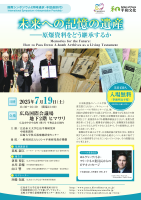 ■Outline:
■Outline:
In conjunction with the Nihon Hidankyo (the Japan Confederation of A- and H-Bomb Sufferers Organizations)’s Nobel Peace Prize win, the Nobel Peace Center in Oslo, Norway, is currently holding an exhibition introducing the stories and works of Nihon Hidankyo and displaying related photographs and other archives. Such archives have played a significant role in recording and conveying the damage caused by the atomic bombings, as well as the A-bomb survivors’ testimonies. As the A-bomb survivors age and their numbers shrink, less of them can directly talk about their experiences year by year, resulting in these archives becoming even more important.
On the 80th commemoration of the atomic bombings, this year’s symposium will introduce the efforts that have been made up to now to preserve these archives, including those of the Nihon Hidankyo. It will also consider how to preserve this collection of archives for posterity.
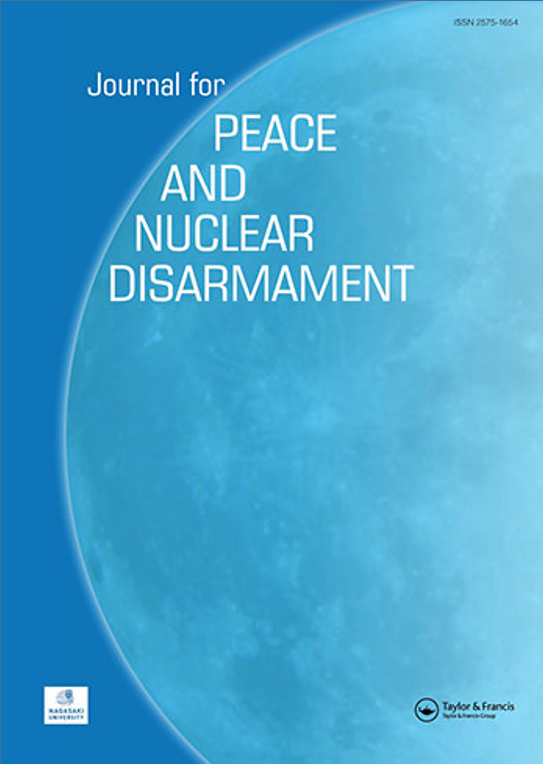 Taylor & Francis, the publisher of Journal for Peace and Nuclear Disarmament (J-PAND), carried an article about Michiru Nishida, a Professor at the School of Global Humanities and Social Sciences of Nagasaki University and at RECNA. In the article, Nishida discusses the complexities of Japan’s nuclear policy, building on his J-PAND research paper, titled “Logic (or Illogic?) of Japan’s Aversion to TPNW and Charting a Path Forward.”
Taylor & Francis, the publisher of Journal for Peace and Nuclear Disarmament (J-PAND), carried an article about Michiru Nishida, a Professor at the School of Global Humanities and Social Sciences of Nagasaki University and at RECNA. In the article, Nishida discusses the complexities of Japan’s nuclear policy, building on his J-PAND research paper, titled “Logic (or Illogic?) of Japan’s Aversion to TPNW and Charting a Path Forward.”
■Interview with Professor Nishida
Meet the Author: Michiru Nishida
■Professor Nishida’s paper in J-PAND
Logic (or Illogic?) of Japan’s Aversion to TPNW and Charting a Path Forward
The Importance of Dialogue in Peace and Disarmament (2025 Fiscal Year Public Lecture on Nuclear Disarmament)
The Importance of Dialogue in Peace and Disarmament
■Lecturer: Robin Geiss (Director, The United Nations Institute for Disarmament Research (UNIDIR))
■Date and Time: May 21, 2025 (Wed) 6:00 PM – 7:30 PM
■Venue: Benex Nagasaki Brick Hall International Conference Hall + Online Streaming
■Hosted by PCU-NC Administration Office
■Co-hosted by Research Center for Nuclear Weapons Abolition, Nagasaki University (RECNA)
“World’s Nuclear Warheads Data” 2025 [All Lists]
The 2025 World’s Nuclear Warheads Data have been published. Please click on the following thumbnail images and download the pdf posters.
| Japanese | English | Korean | |
| Jun. 2025 | 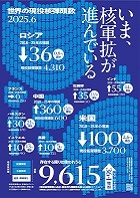 |
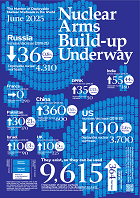 |
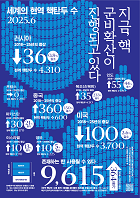 |
◇ You can see previous “World’s Nuclear Warhead Data” from [All Lists].
In Memory of Pope Francis:
A Moral Beacon for Nuclear Disarmament
Research Center for Nuclear Weapons Abolition, Nagasaki University (RECNA)
April 22, 2025
Pope Francis will be remembered as a global conscience in the struggle for nuclear disarmament, whose declaration resounded worldwide:
“The use of atomic energy for purposes of war is immoral, just as the possession of atomic weapons is immoral.” 1
These words, delivered during his historic visit to Hiroshima and Nagasaki in November 2019, marked a pivotal moment in the global movement to eliminate nuclear weapons. Standing at the hypocenter of the atomic bombing in Nagasaki, Pope Francis offered a message that continues to echo through disarmament efforts:
“Peace and international stability are incompatible with attempts to build upon the fear of mutual destruction or the threat of total annihilation.”2
The Holy Father warned against the false security offered by nuclear deterrence, which is rooted in fear and mistrust and obstructs genuine dialogue between peoples and nations. His call for a “global ethic of solidarity and cooperation” resonates with RECNA’s belief that peace is only possible through trust, dialogue, and mutual respect.
Moreover, Pope Francis condemned the vast sums of money spent on weapons of mass destruction, calling them “an affront crying out to heaven.”3 Under his leadership, the Holy See was among the first signatories and ratifying parties of the Treaty on the Prohibition of Nuclear Weapons (TPNW), lending profound moral authority and global visibility to the humanitarian imperative behind nuclear abolition.
His Holiness’ presence in Nagasaki brought hope to hibakusha and to all those dedicated to building a future free from the threat of nuclear war. His call to be “peacemakers” is a legacy that RECNA will strive to honor in its work.
May his memory strengthen our resolve for peace and inspire renewed global efforts to achieve the total elimination of nuclear weapons.
1 ADDRESS OF THE HOLY FATHER, Peace Memorial (Hiroshima), 24 November 2019, https://www.vatican.va/content/francesco/en/messages/pont-messages/2019/documents/papa-francesco_20191124_messaggio-incontropace-hiroshima.html
2 ADDRESS OF THE HOLY FATHER ON NUCLEAR WEAPONS, Atomic Bomb Hypocenter Park (Nagasaki), 24 November 2019, https://www.vatican.va/content/francesco/en/speeches/2019/november/documents/papa-francesco_20191124_messaggio-arminucleari-nagasaki.html.
3 Ibid
